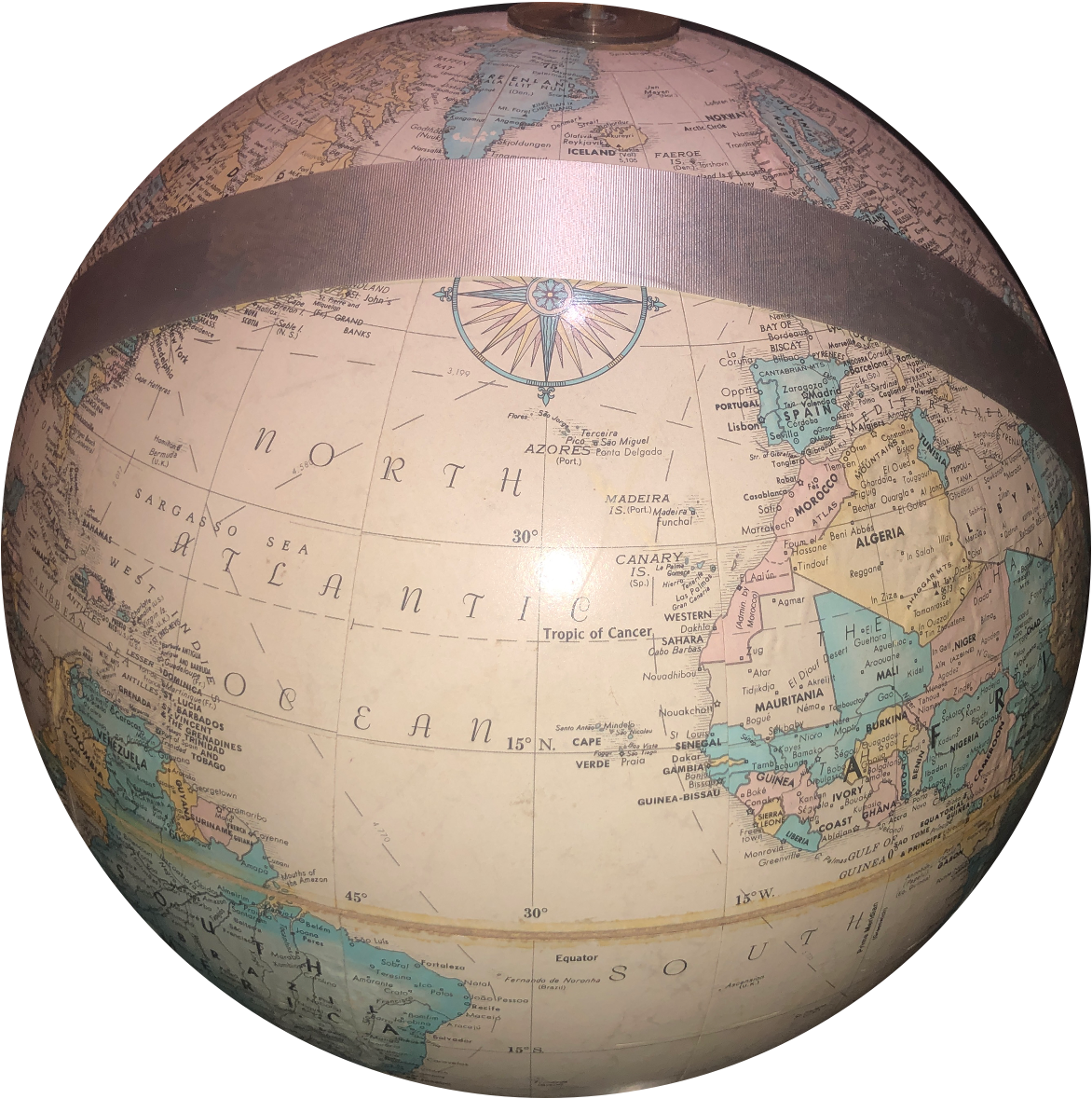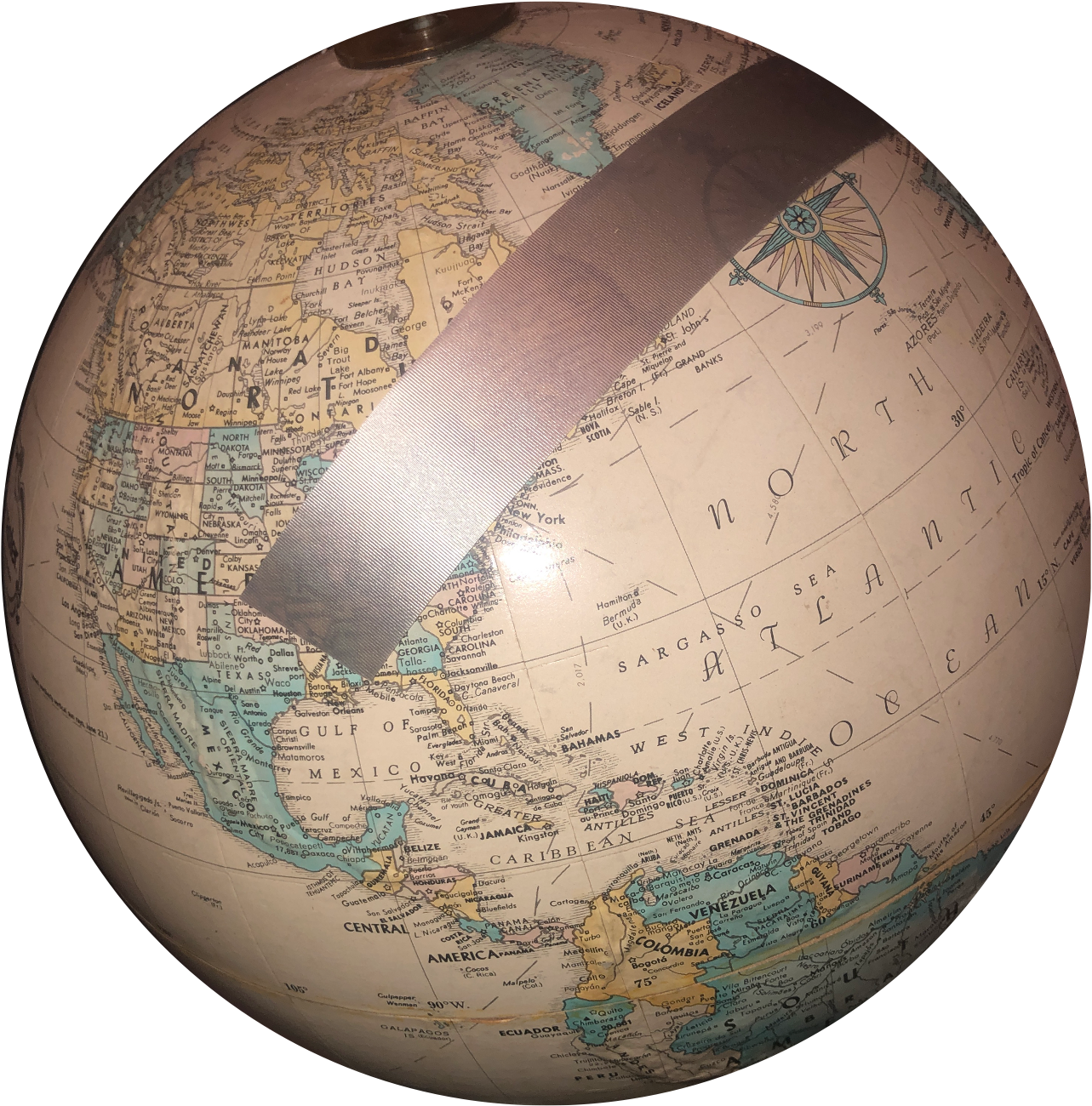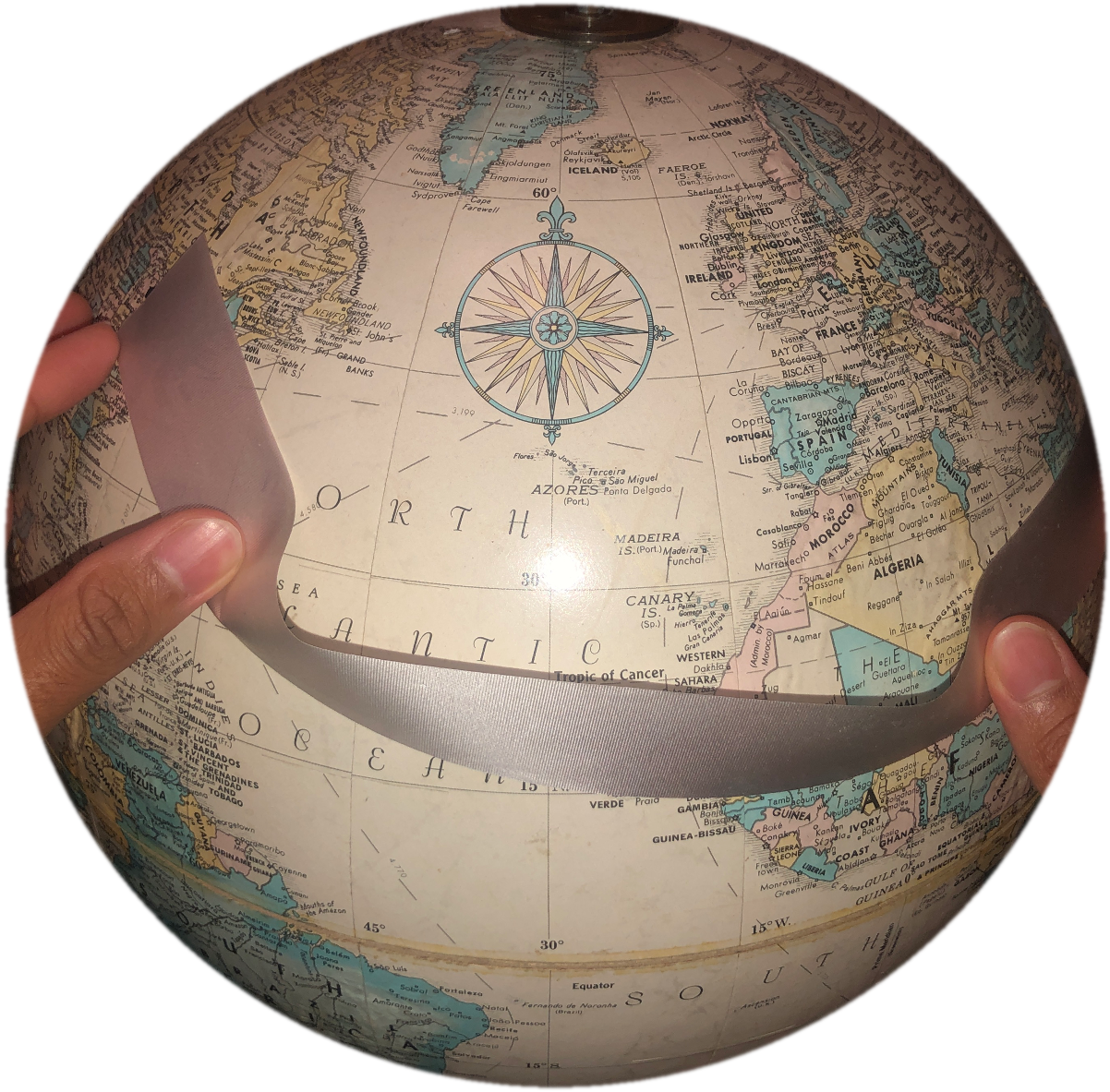Stating the Obvious: The Qibla in North America is North-East
(Whether you believe the Earth is round or flat)The Qibla is the direction one faces towards the Ka’ba in Mecca and is an important condition for the validity of one’s prayer. Determining the Qibla is simple: know where you are and where Mecca is, and face the direction. Unfortunately, despite the overwhelming, conclusive evidence that the direction to Mecca from North America is North-East, a small group of dissidents have tried to assert a direction to Mecca contrary to reality. Here, we outline the evidence that demonstrates the direction of the Qibla, and highlight the serious flaws and contradictions evident from the arguments of such people.
Evidences:
#1: Grab your globe and a string (if you believe the Earth is flat, skip over to #2)
Considering that the globe is a pretty accurate representation of the Earth we live on, if you were to place one end of the string at your present location, and the other on the City of Mecca, you would come to realize the direction you would necessarily have to face to reach the Ka’ba. (Try it with a city in North America - you would find that the direction is North East).
#2: Using a flat earth
As for the common flat maps widely present, then there is a unanimous consensus among geographers that it is widely distorted, so much so that the sizes of the countries around the world are not accurately represented. In fact, one of the distortions present in the famous flat map which is crucial to the issue of Qibla is direction. As explained below (see the response to Claim #1), this version of the flat map cannot be relied upon for the direction of Qibla.
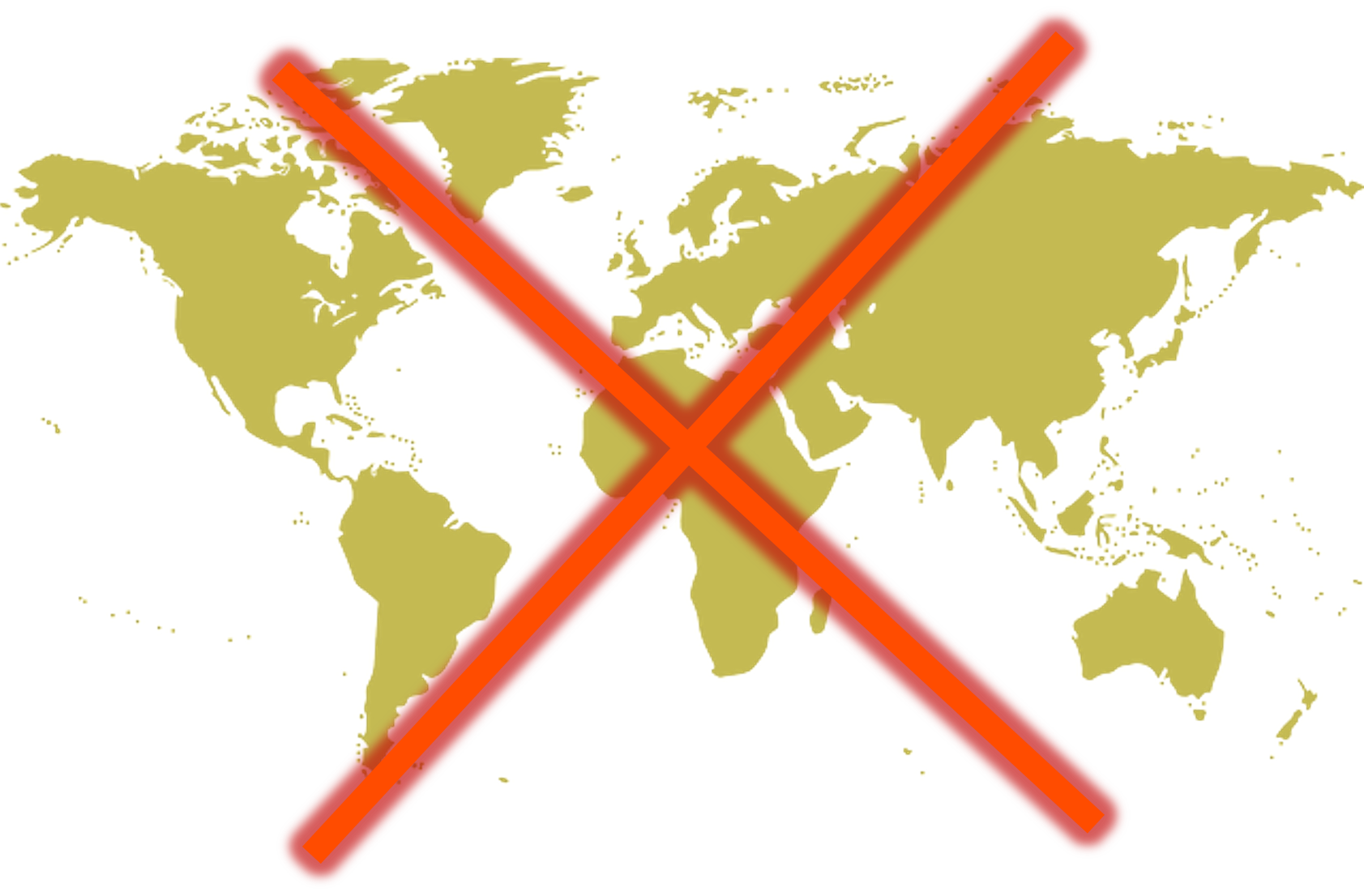
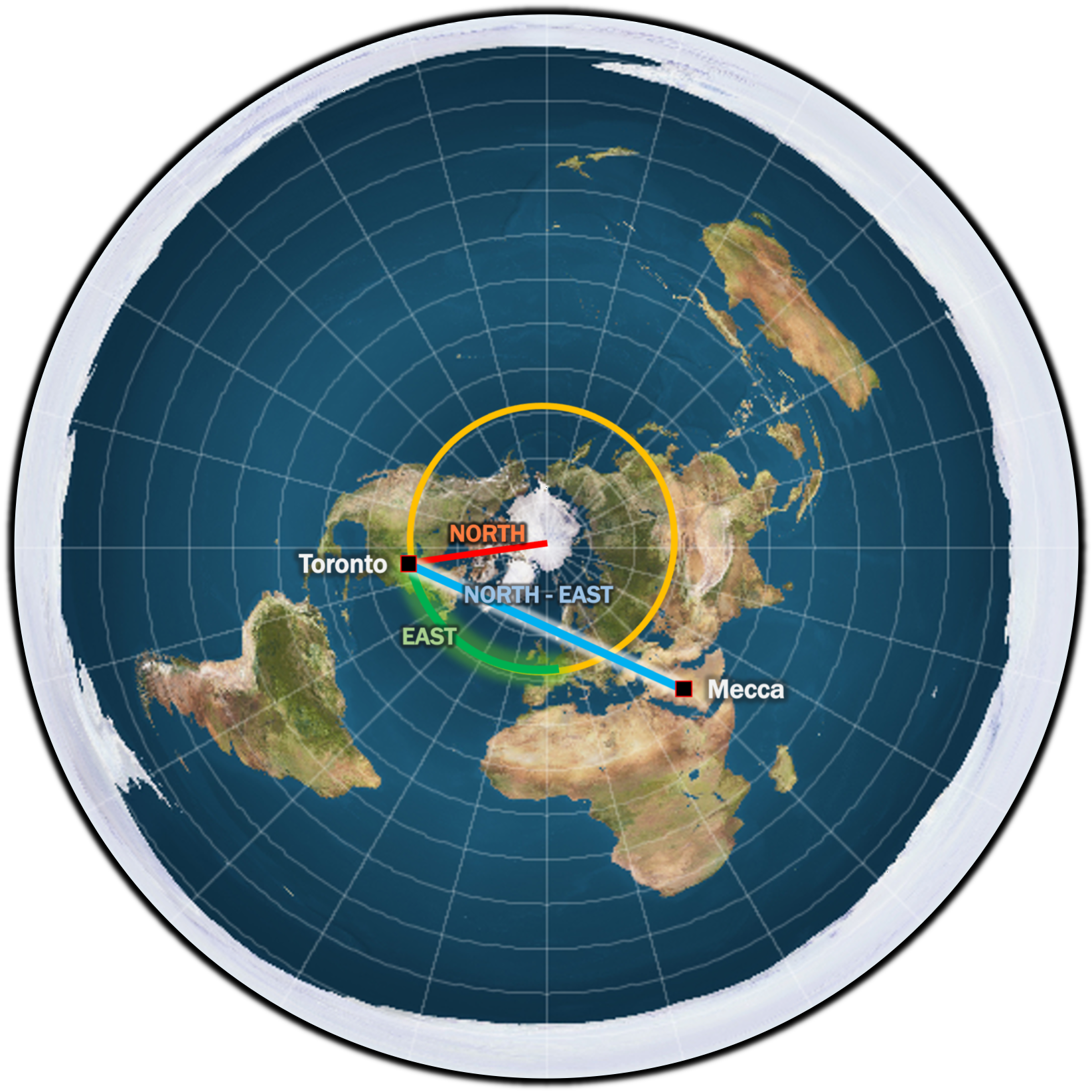
#3: Using the sun
Taken from Moonsighting.com Qibla Direction (https://moonsighting.com/qibla.html):
“It has been observed for centuries and reported in many books by Muslims around the world that two times a year the sun comes overhead above Ka'bah. This is observational fact for centuries, and is used to set the correct Qibla direction in places far from Makkah by Muslims for last so many centuries. Those two dates and times are:May 28 at 9:18 UTWhen you observe the sun at these times (after converting it to your local time), you will be facing the Ka'bah giving you Qibla direction, because if there were a very high minaret over Ka'bah reaching up to the sky, then you will see it just like you are seeing the sun. Now, let us take a few examples. If you are in Islamabad, Pakistan (+5 hours time difference from Greenwich), the local time to observe the sun would be 2:18 pm on May 28, and 2:27 pm on July 15. Similarly, if you are in Nova Scotia, Canada (-3 hours time difference from Greenwich), the local time to observe the sun would be 6:18 am on May 28, and 6:27 am on July 15. If you are at a location that you cannot see the sun on the above mentioned two dates, then you can locate Qibla from the sun when it comes overhead at a point diametrically opposite of Makkah on the globe and look for the following two dates and times:
July 15 at 9:27 UTNovember 28 at 21:09 UTFace toward the shadow from the sun at these times (after converting it to local time) and you will be facing Ka'bah. If you can see the sun but cannot see the shadow, put your back towards the sun and your face will be towards Qibla.”
January 13 at 21:29 UT
#BONUS: What does Google Maps say?
Responses to deceptive arguments:
Claim #1: We cannot use a 3D globe to determine the Qibla, but rather we must use a simple flat map to determine the direction of Qibla, which clearly seems to show South-East.
Response: There are many versions of flat maps available, simply due to the fact that flat maps are attempted projections - not the reality - of the 3D Earth, and each version has a distortion in either size, distance, and/or direction. Those who argue that the Qibla is South-East base their judgment on a cylindrical map projection, particularly the Mercator projection, which contains major distortion in size and direction. The fact that it contains distortions in direction is sufficient to avoid using it to determine the Qibla.
If one insists on justifying the use of any 2D map available, then what should we say to one who chooses to pray South-West (or North-West depending on their reading) based on this AuthaGraph map? What about those who use the Azimuthal equidistant projection (which conforms with the Flat Earth map for those who believe that the earth is flat), which clearly points North-East? The fact that different flat maps taken from a 3D globe point to a different Qibla direction indicates that such maps are not reliable.
Claim #2: We cannot rely on scientific innovations to determine Islamic rulings that have been in place long before the modern scientific and technological innovations.
Response: This is certainly a strange claim for those who argue that the Qibla is South-East based off of a 2D projection (thanks to scientific and technological innovations) of a 3D illustration of Earth (thanks to scientific and technological innovations) that is understood to be distorted by geographers (thanks to scientific and technological innovations).
In Islam, we are allowed to utilize technological innovations to help aid us for as long as it doesn’t go in opposition to the Islamic Texts (Quran and Hadith). That is why we are allowed to use microphones in the Masjid when praying or delivering Khutbah, or the internet to propagate Islamic Dawah.
Claim #3: We must rely on the tools agreed upon by the scholars of the past to determine our direction of Qibla.
Response: There is no disagreement in utilizing the tools agreed upon by the scholars of the past to determine our direction of Qibla, such as the sun, stars, wind, etc. The question is, do these tools tell us where the Ka’ba is or do they tell us what direction we are facing relative to where we are? In other words, how do the stars tell us that the ka’ba is in the south east direction and not the north east direction? In fact, using some of the tools such as the sun clearly point to the direction of North East (see the “Evidence” section above), so what tools actually suggest that the direction is South East?
In other words, the Quranic teaching for us to use the stars as direction are there for us to know which way we are facing if we happen to be at any place and we need to know which direction we are facing at that moment.
Claim #4: The North-East direction was the direction chosen by non-Muslims for Muslims to face when they (non-Muslims) built the first Masjid for Muslims in North America.
Response: Firstly, the claim that the first Masjid for Muslims in North America was built by non-Muslims needs to be substantiated. Secondly, even if the North-East direction was initially pointed out by non-Muslims, how does that negate that the actual direction towards Mecca is, in reality, North-East? In fact, many Muslim organizations in North America have independently determined that the Qibla is North-East, as nearly every Masjid in North America take as their Qibla the North-East direction.
Claim #5: When determining the “shortest distance”, we must not use the flat (2D) surface of the Earth, but rather we must take into account the X, Y, and Z (3D) planes to determine shortest distance. Otherwise, we would be facing space as we pray.
Response: Philosophical statements are dangerous to the common people, as they only serve confusion as opposed to clarity. The gist of this argument is that one should face through the Earth’s crust and the mantle (and possibly through the outer and inner core) to get to Mecca. If this argument was true, we would have to pray on our bellies to face through the Earth. Evidently, this argument is so ridiculous, it leads to one praying Salah without establishing the pillars of Salah.

